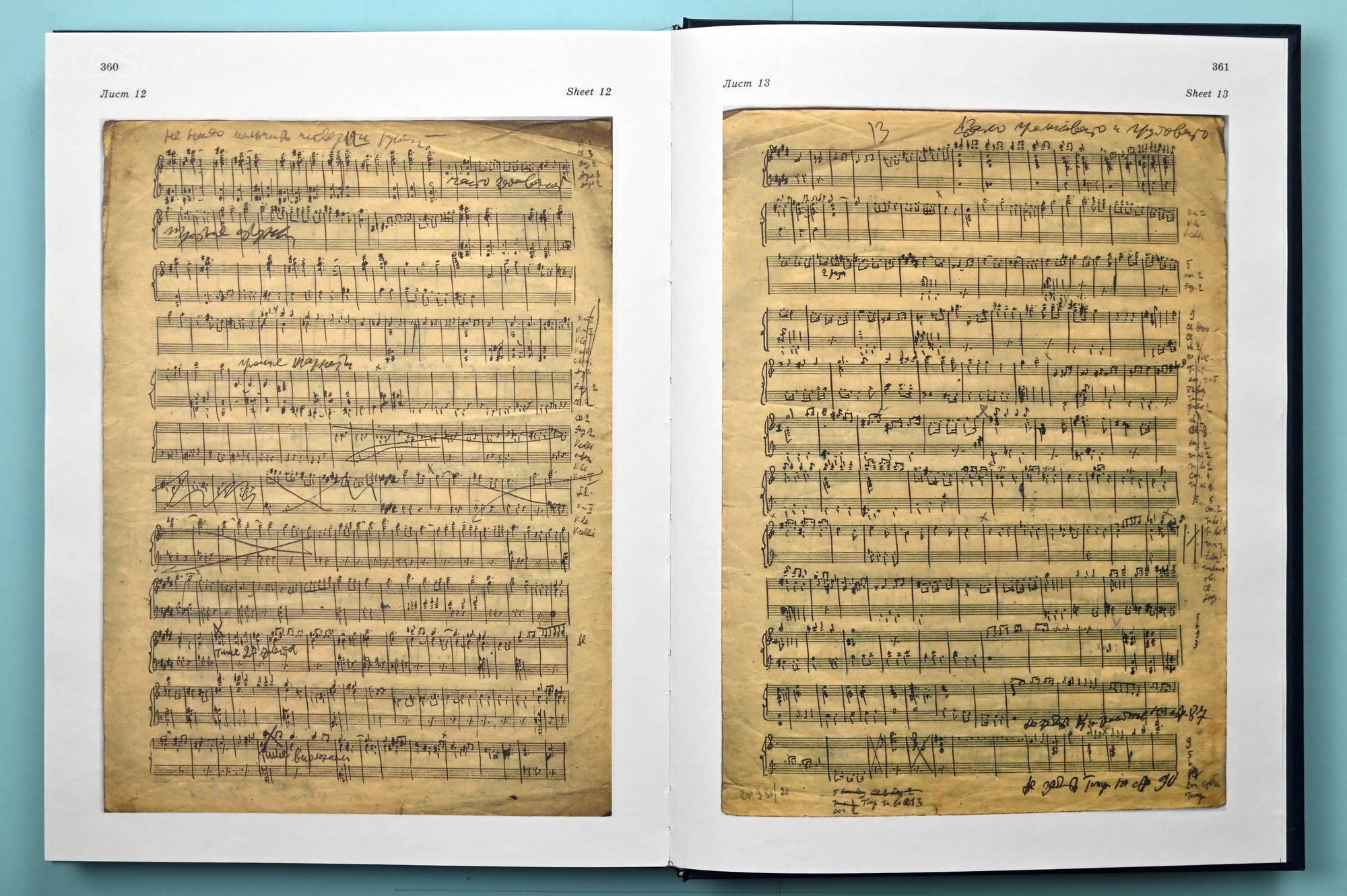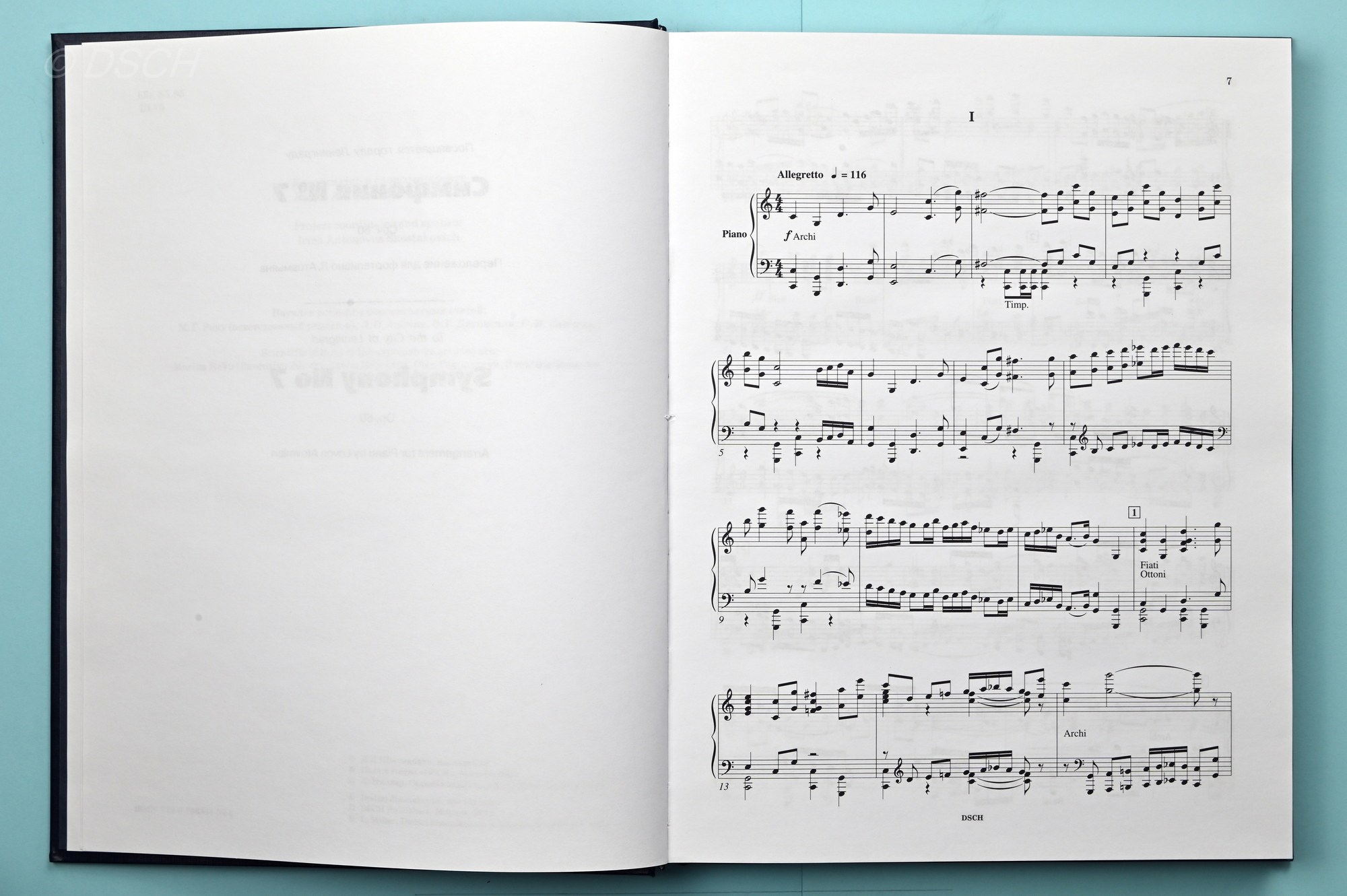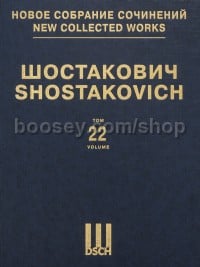Symphony No. 7 Op.60 - Piano Score Four Hands (New Collected Works vol.22)
Symphony No. 7 Op.60 - Piano Score Four Hands (New Collected Works vol.22)
* Estimated price converted from UK retail price
Click below to view music sample pages


The piano arrangement of the symphony and its preparation for publication were carried out at the same time the score was published. Shostakovich did a four-hand arrangement only of the symphony’s finale (probably for the first rehearsals). In addition to the clarifying performance notes entered by Shostakovich, the piano score of the finale contains both author’s notes and notes by an unidentified person relating to preparation of the piano arrangement. Shostakovich gave several indications (“octaves”, “l[eft] h[and]”, “octaves in the left hand”), and the arrangement of the music is shown schematically in the same pencil with a wavy line going from one stave to the next. The texture, the arrangement of chords, and other details are clarified in a different hand from the composer’s. It is possible that some of these marks were done by Levon Atovmian, whom Shostakovich entrusted to work on the four- and two-hand arrangements of the Seventh Symphony.
The question of publishing the arrangement of the Seventh Symphony was also decided at the official level: there are notes by officials of the Arts Committee on the hand-written copies of the arrangement that have survived. In October 1942, Shostakovich reported to the Main Department of Music Institutions of the Arts Committee: “Com[rade] Atovmian has acquainted me with his work on the four-hand arrangement of my 7th Symphony. The first movement is ready and has been approved by me. Work has begun on the other movements. I think it would be worth asking Levon Atovmian to do the whole arrangement. D. Shostakovich. 15 X 1942.” On 13 December 1942, the composer told Atovmian: “I have sent a telegram to Vladimir Surin telling him that I have approved your arrangement of my Seventh Symphony.” A contract between Muzgiz and Atovmian for the publication of the entire four-hand piano arrangement was entered on 6 January 1943. But first, two-hand arrangements were put out by Muzfond as collotype prints (1944 and 1947). The simplified edition of the symphony came out in 1946 (also in collotype print) as a two-hand piano arrangement. The four-hand handwritten piano score of the symphony that has survived as a rough draft done by Atovmian reflects the difficulty of the work: judging by the many corrections, additional inserts and paste-ins, the “invasion episode” was the most problematic. The author’s version became the basis of the fourth movement of the four-hand arrangement, in which Atovmian took into account Shostakovich’s instructions. Some of the differences relate to the inclusion of octave doubling, a different arrangement of the music between the first and second piano parts or rearrangement of the text within one part.The four-hand piano arrangement was published in collotype print by the USSR Muzfond in 1947.151 Sovetsky kompozitor Publishers put out the four-hand piano arrangement of the Seventh Symphony in 1969 based on the same text (with several insignificant differences).
The publication of the two-hand piano score is based on the collotype edition put out by the USSR Muzfond, Moscow, in 1947. The publication of the four-hand piano score is based on the edition put out by Sovetsky kompozitor, Moscow, in 1969.
This ambitious series by DSCH, the exclusive publisher of the works of Dmitri Shostakovich, when complete, will run to 150 volumes.
Based on authentic manuscripts, accompanied by commentaries in Russian and in English, each volume contains new engravings, articles relating to the history of the compositions, facsimile pages of Shostakovich's manuscripts, outlines, and rough drafts.
Divided into 15 different "series" or genres, the edition will include nearly all the original works of the composer, and his instrumentation of music by Domenico Scarlatti, Beethoven, Schubert, Schumann, Mussorgsky, Rimsky-Korsakov, Johann Strauss, Youmans, Braga, Tishchenko, and others.
25% of the New Collected Works will be made up of previously unpublished material: over 80 of his works are being published here for the first time. Many of these previously unknown works could not be published or performed during the composer's lifetime for ideological reasons.
The fifteen "series" within the edition comprise:
I: Symphonies (vols 1-30)
II: Orchestra Compositions (vols 31-37)
III: Instrumental Concertos (vols 38-49)
IV: Compositions for the Stage (vols 50-67)
V: Suites from Operas and Ballets (vols 68-72)
VI: Compositions for Choir and Orchestra (With or Without Soloists) (vols 73-83)
VII: Unaccompanied Choral Compositions/Arrangements of Russian Folksongs (vols 84-86)
VIII: Compositions for Solo Voice(S) With Orchestra (vols 87-90)
IX: Chamber Compositions for Voice and Songs (vols 91-97)
X: Chamber Instrumental Ensembles (vols 98-105)
XI: Instrumental Sonatas(vols 106-108)
XII: Piano Compositions (vols 109-115)
XIII: Incidental Music (vols 116-121)
XIV: Film Music (vols 122-145)
XV: The Works of Other Composers, Instrumentation by Shostakovich (vols 146-150)




